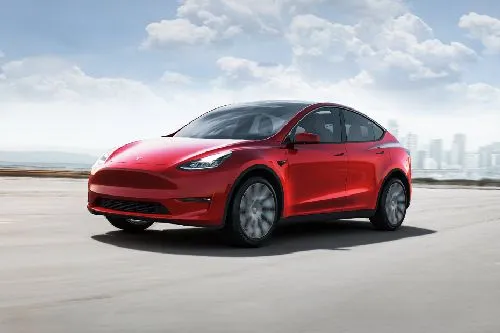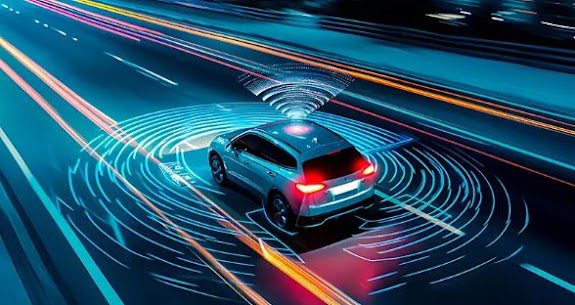
As the world transitions toward a more sustainable future, the landscape of transportation continues to evolve. One area witnessing unprecedented growth is the electric mobility sector, which has become a focal point of innovation and development. Electric mobility trends 2024 reflect a dynamic shift in technologies, consumer preferences, and government policies aimed at fostering greener alternatives to traditional fossil-fuel-based vehicles.
A Surge in Electric Vehicle (EV) Adoption
The adoption of electric vehicles is no longer a niche phenomenon. Projections for 2024 suggest a significant uptick in global EV sales, spurred by advancements in battery technology and widespread affordability. Automakers are unveiling a new generation of electric cars with extended ranges, faster charging capabilities, and competitive pricing, which appeal to both early adopters and mainstream consumers.
Key Drivers of EV Adoption in 2024:
- Battery Innovation: Lithium-ion batteries are being supplemented with solid-state alternatives, increasing energy density and reducing charging times.
- Government Incentives: Subsidies, tax breaks, and rebates are making EVs more accessible.
- Environmental Awareness: Consumers are increasingly drawn to vehicles with lower carbon footprints.
The emergence of compact electric SUVs and luxury electric sedans highlights the diversity of offerings catering to various market segments.
Expansion of Charging Infrastructure
A robust charging network is crucial for the widespread adoption of EVs. In 2024, one of the most notable electric mobility trends 2024 is the expansion of ultra-fast charging stations across urban centers and highways. Charging infrastructure providers are prioritizing accessibility, reliability, and user experience to encourage the shift from gasoline to electricity.
Innovations in Charging Technology:
- Wireless Charging Pads: Vehicles equipped with inductive charging systems are eliminating the need for cables.
- Smart Charging Hubs: AI-enabled hubs manage energy distribution efficiently during peak demand.
- Integration with Renewable Energy: Charging stations powered by solar and wind energy are becoming standard in eco-conscious cities.
Such advancements aim to resolve “range anxiety,” a common barrier for potential EV buyers.
Growth of Micromobility Solutions
Micromobility has taken center stage as cities seek sustainable alternatives for short-distance travel. Electric bikes (e-bikes), scooters, and mopeds are redefining urban commutes, offering flexibility, affordability, and eco-friendliness. Startups and established companies alike are leveraging shared mobility platforms to cater to the growing demand.
Highlights of Micromobility in 2024:
- Enhanced Safety Features: Advanced braking systems, LED lighting, and GPS tracking are standard.
- Subscription Models: Flexible payment options, including monthly subscriptions, make micromobility accessible.
- Integration with Public Transport: E-scooters and bikes complement buses and trains, enabling seamless multimodal travel.
Cities like Amsterdam and Copenhagen continue to set benchmarks in micromobility adoption, inspiring others to follow suit.
Autonomous Electric Vehicles
Autonomous electric vehicles are no longer a concept of science fiction. In 2024, self-driving cars and delivery bots are making their presence felt. Companies are conducting large-scale trials of autonomous EVs for ride-hailing services and logistics, signaling a profound transformation in mobility.
Key Developments in Autonomous EVs:
- Improved Sensors: LiDAR, radar, and cameras ensure safe navigation.
- Regulatory Progress: Governments are crafting laws to regulate self-driving technology.
- Energy Efficiency: Autonomous systems are being optimized to minimize energy consumption.
These vehicles promise to reduce congestion, lower emissions, and enhance safety on roads.
Electric Aviation Takes Off
While cars and bikes dominate the conversation, electric aviation is emerging as a disruptive force in transportation. Electric vertical takeoff and landing (eVTOL) aircraft are at the forefront, promising zero-emission air travel for short distances.
The Rise of eVTOLs:
- Urban Air Mobility: Cities like Dubai and Los Angeles are piloting air taxi services.
- Advanced Batteries: Lightweight materials and high-capacity batteries are making electric flight viable.
- Collaboration with Tech Giants: Companies like Uber and Airbus are spearheading innovation in this field.
By addressing issues like traffic congestion and pollution, eVTOLs represent an exciting frontier in electric mobility trends 2024.
Electrification of Public Transport
Public transportation is undergoing electrification at an unprecedented pace. Electric buses and trains are becoming common in metropolitan areas, supported by government initiatives to decarbonize public transit.
Benefits of Electric Public Transport:
- Reduced Noise Pollution: Electric buses operate silently, improving urban living conditions.
- Operational Savings: Lower maintenance and fuel costs make electric buses economically viable.
- Cleaner Air: The shift reduces greenhouse gas emissions significantly.
Countries like China and India are leading the charge, with ambitious plans to electrify entire bus fleets.
Integration of AI and IoT in Electric Mobility
Artificial intelligence (AI) and the Internet of Things (IoT) are pivotal in enhancing the electric mobility experience. Smart features, including predictive maintenance and real-time navigation, ensure optimal vehicle performance.
Applications of AI and IoT:
- Vehicle-to-Grid Technology: EVs can act as energy storage units, supplying power back to the grid during shortages.
- Connected Driving: IoT enables seamless communication between vehicles and infrastructure.
- Enhanced User Interfaces: AI-driven dashboards provide personalized insights for drivers.
Such advancements not only enhance convenience but also boost sustainability efforts.
Global Collaboration and Policy Support
Collaboration among governments, industries, and consumers is essential for the success of electric mobility trends 2024. International agreements on carbon neutrality are driving innovation, while local policies ensure swift implementation.
Policy Highlights:
- Emission Standards: Stricter regulations are phasing out internal combustion engines.
- Infrastructure Grants: Funding for charging networks accelerates development.
- Education Campaigns: Awareness programs encourage public adoption of electric mobility.
These coordinated efforts are creating a conducive ecosystem for transformative change.
Conclusion
The trajectory of electric mobility is one of promise and innovation. Electric mobility trends 2024 underscore a holistic approach to revolutionizing transportation. From electric cars to eVTOLs and smart infrastructure, the future is electric, interconnected, and sustainable. As the industry surges ahead, stakeholders must embrace these trends to drive meaningful progress.






